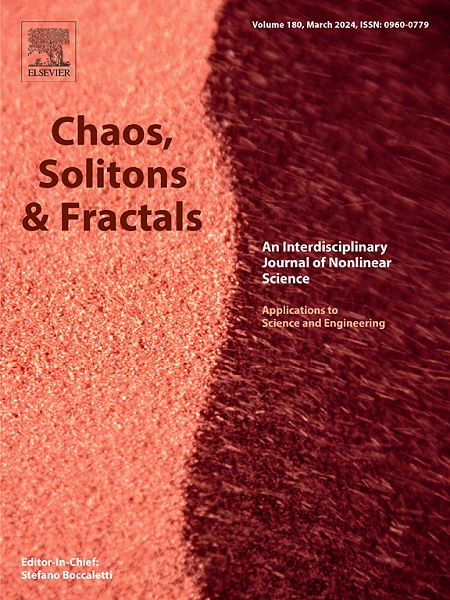外磁场作用下与轨道角动量光束相互作用的三能级原子系统中居群分布的方位和径向控制
IF 5.6
1区 数学
Q1 MATHEMATICS, INTERDISCIPLINARY APPLICATIONS
引用次数: 0
摘要
本文研究了轨道角动量束与三能级闭环原子系统的相互作用,重点研究了相对相位、轨道角动量束数和磁场失谐对居群方位分布的影响。我们探索了以螺旋相结构为特征的OAM光束对原子跃迁的影响,特别是研究了涡旋光束如何在原子系统中诱导空间依赖的种群分布。结果表明,当探头与涡旋场的相对相位非零时,种群分布呈现出方位依赖性。相比之下,对于零相对相位,居群分布导致原子在方位面中心的二维定位,为原子定位提供了一种新的方法。对失谐磁场的影响也进行了研究,表明非零失谐会导致非对称的方位角种群分布,随着失谐的增加,出现峰值和低谷。这些结果为结构光场在量子系统中的作用提供了有价值的见解,为量子信息处理、原子定位和原子系统的精确控制等领域提供了潜在的应用。本文章由计算机程序翻译,如有差异,请以英文原文为准。
Azimuthal and radial control of population distribution in a three-level atomic system interacting with orbital angular momentum beams via an external magnetic field
This paper investigates the interaction between orbital angular momentum (OAM) beams and a three-level closed-loop atomic system, focusing on how the azimuthal distribution of population is influenced by relative phase, OAM number, and magnetic field detuning. We explore the effect of OAM beam, characterized by their helical phase structure, on atomic transitions, specifically examining how the vortex beam induces spatially dependent population distributions in the atomic system. Our result shows that when the relative phase between the probe and vortex field is nonzero, the population distribution exhibits azimuthal dependence. In contrast, for zero relative phase, the population distribution leads to 2D localization of atoms at the center of the azimuthal plane, offering a novel method for atom localization. The effect of detuning the magnetic field is also examined, showing that nonzero detuning causes asymmetric azimuthal population distributions, with peaks and dips emerging as detuning increases. These results provide valuable insights into the role of structured light fields in quantum systems, offering potential applications in areas such as quantum information processing, atom localization, and precision control of atomic systems.
求助全文
通过发布文献求助,成功后即可免费获取论文全文。
去求助
来源期刊

Chaos Solitons & Fractals
物理-数学跨学科应用
CiteScore
13.20
自引率
10.30%
发文量
1087
审稿时长
9 months
期刊介绍:
Chaos, Solitons & Fractals strives to establish itself as a premier journal in the interdisciplinary realm of Nonlinear Science, Non-equilibrium, and Complex Phenomena. It welcomes submissions covering a broad spectrum of topics within this field, including dynamics, non-equilibrium processes in physics, chemistry, and geophysics, complex matter and networks, mathematical models, computational biology, applications to quantum and mesoscopic phenomena, fluctuations and random processes, self-organization, and social phenomena.
 求助内容:
求助内容: 应助结果提醒方式:
应助结果提醒方式:


